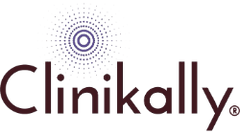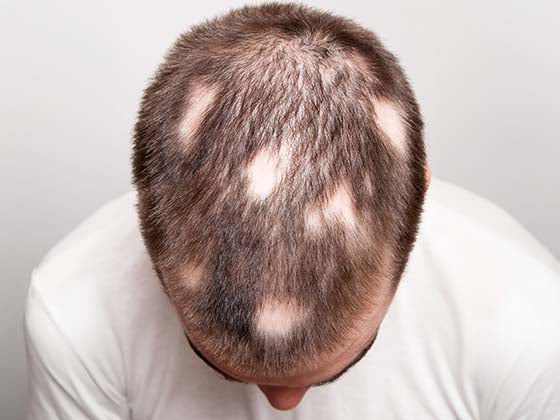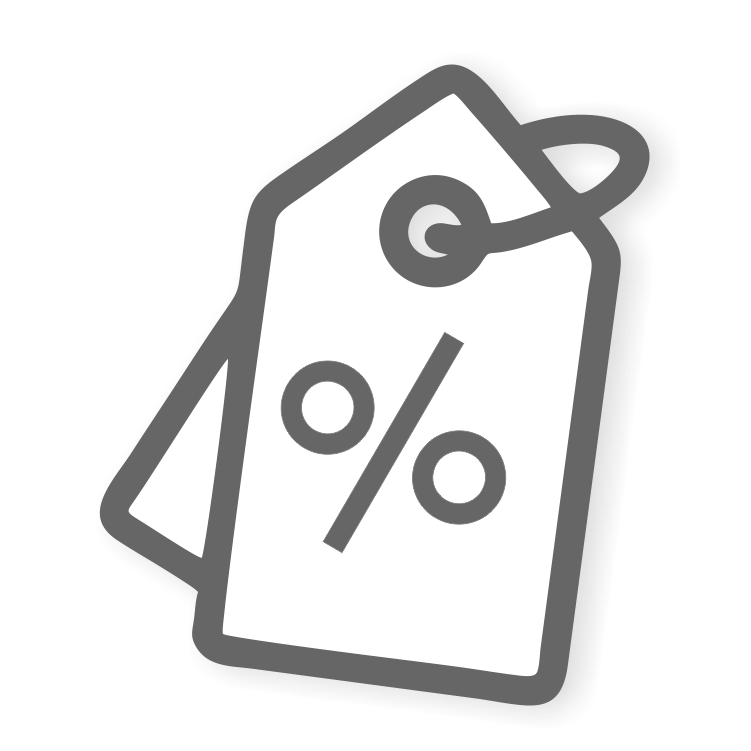Chemical perms may cause hair loss; however, the extent is dependent on a variety of circumstances. In this blog, we'll talk about how chemical perms cause hair loss and what you should know.
Understanding Chemical Perms and Their Impact on Hair

A chemical perm alters the structure of hair by using chemicals to break down the disulfide bonds within the hair shaft, allowing the hair to be reshaped into curls or waves; however, this process can significantly damage hair, resulting in dryness, breakage, and split ends if not done properly or if the hair is already compromised; It is critical to consult a professional stylist when considering a perm to minimize damage and choose the best type of perm for your hair type.
Their impact on hair:
-
Dryness: The chemical process can remove the hair's natural oils, making it dry and brittle.
-
Breakage: If the perm is too harsh or applied incorrectly, it can weaken the hair shaft, causing breakage, particularly on previously damaged hair.
-
Split ends: Damaged hair from perming is more likely to develop split ends.
-
Scalp irritation: In some cases, the chemicals can irritate the scalp, particularly if it is sensitive.
How Chemical Perms Work: Breaking Down the Process

Chemical perms are a popular way to add curls, waves, and texture to straight hair. The process uses chemicals to alter the natural structure of the hair, resulting in long-lasting curls or waves. Here's a detailed description of how chemical perms work, from start to finish:
-
Preparation: Before the perming process begins, your hairdresser will assess your hair type and condition. Healthy hair will often take the operation better than damaged hair, thus, a thorough consultation is required.
-
Applying the perm solution: The main chemical agent used in perms is ammonium thioglycolate or, in some situations, sodium hydroxide. These chemicals are responsible for breaking down the bonds that hold your hair's natural shape together.
-
Processing duration: The hair is allowed to process for a predetermined amount of time, typically 15 to 30 minutes, depending on the type of hair and desired curl. During this period, the chemical solution works to break down the disulfide bonds in the hair.
-
Rinsing the perm solution: After processing the hair for the specified amount of time, the perm solution is thoroughly washed away. It is vital to remove all traces of the chemical solution, as it might continue to harm the hair if left on for too long.
-
Applying the neutralizer: After the solution has been washed, apply a neutralizing solution. This neutralizer restores the disulfide bonds that the perm solution destroyed. This is what "sets" the curl or wave pattern in your hair.
-
Removing the rods and rinsing again: Once the neutralizer has had time to work, the perm rods are gently removed. This step reveals the new curl pattern that the hair has taken on.
-
Drying and styling: After the perm is finished, your stylist will either let your hair air dry or use a blow dryer to style it. You'll see the new texture and curl pattern right away after the perm, but don't wash or manage the curls for at least 48 hours to allow the bonds to fully set.
-
Aftercare: Caring for permed hair is essential for maintaining healthy curls and waves. Perms can dry out your hair, therefore, a thorough moisturizing routine is vital. Here are some tips for post-perm hair care, including deep conditioning, avoiding heat styling, using mild products, and brushing gently.
Ingredients in Perm Solutions: What’s in the Formula?

The main ingredients commonly found in permanent solutions and what they do:
-
Ammonium thioglycolate: It is the main active ingredient in most perm solutions. It works by disrupting the disulfide bonds that keep the hair's form and structure. Once these ties are dissolved, the hair becomes more pliable and can be sculpted into curls or waves with perm rods. It disrupts the natural structure of hair by reaching the shaft and destroying the sulfur-sulfur links in the keratin protein. This permits the hair to take on a new shape.
-
Sodium hydroxide (Lye): It is sometimes known as "lye" and is a potent chemical that is commonly used in various perms, particularly those designed for exceptionally coarse or resistant hair. Sodium hydroxide, like ammonium thioglycolate, works by reducing the disulfide bonds in the hair. However, it is a much stronger, more caustic chemical, making it suitable for more obstinate hair types.
-
Cysteamine or cystamine: It is commonly used in "softer" or less damaging perms, particularly for persons with fine or sensitive hair. They are thiol compounds that degrade disulfide bonds but are milder than ammonium thioglycolate. These substances soften the hair while also allowing it to take on various shapes. They are very effective on fine, weak, or previously damaged hair.
-
Hydrogen peroxide: It is commonly employed as a neutralizer in perm solutions, although it may also exist in minor amounts in the perm recipe. It is in charge of terminating the chemical reaction and resetting the bonds to seal in the new shape. After applying the perm solution, hydrogen peroxide is used to neutralize the perming chemical and "fix" the new curl pattern. This guarantees that the newly produced curls or waves stay intact.
-
Glycerin: It is a humectant, which means it helps to maintain moisture in the hair. It's frequently used in perm solutions to counteract the drying effects of more potent chemicals. It attracts moisture to the hair, preventing excessive dryness and keeping the hair hydrated throughout the perming process.
-
Ammonium bisulfite: It is another softer option utilized in some perms. It functions similarly to ammonium thioglycolate but is considered a gentler agent. It disrupts disulfide connections, allowing the hair to be sculpted. The solution is commonly used in less forceful perms intended for sensitive or previously processed hair.
-
Citric acid: It is typically used to balance the pH of the perm solution and ensure that the chemical reaction occurs properly. Perm solutions are alkaline, and citric acid helps to lower the pH to a safer level. It also helps to neutralize any toxins that remain after the perm treatment.
-
Lanolin or silicone compounds: Some perm solutions contain lanolin (a natural wax) or silicone-based chemicals to enhance shine, smoothness, and protection. Lanolin and silicones build a protective covering around the hair shaft, reducing moisture loss and providing a smooth surface.
-
Fragrances and colorants: Most perm solutions contain fragrances to conceal strong chemical odors, and colorants may be used for aesthetic purposes. These chemicals are not active in the perming process, but they do make the solution more pleasant to use.
Common Side Effects: What Happens to Your Hair and Scalp?

Chemical perms can produce gorgeous, long-lasting curls or waves, but they can also cause hair breakage, dryness, scalp irritation, and burns. The majority of these negative effects can be reduced with careful preparation, application, and aftercare. Always check with a professional stylist to verify that the correct perm solution is used for your hair type, and be mindful of aftercare to keep your hair healthy and vibrant. If you have serious reactions, see a dermatologist or healthcare expert.
The Connection Between Perms and Hair Loss

Chemical perms are a popular way to change the texture of your hair, creating curls or waves that can last for months. Many people are concerned that perms may cause hair loss. Perms do not cause permanent hair loss, although they might cause temporary hair thinning or breaking, giving the appearance of hair loss. Perms may have an influence on your hair, and there is a link between perms and hair loss.
-
Hair breakage: Perming uses strong chemicals to break and rebuild the disulfide bonds in your hair, changing its natural shape. This procedure might weaken the hair shaft, especially if performed poorly or too frequently. If the perming solution weakens the hair, it might become brittle and break easily. This is especially true for persons with previously damaged or fine hair, which may be more sensitive to chemical treatments.
-
Excessive dryness and brittle hair: Chemicals in perm solutions, such as ammonium thioglycolate or sodium hydroxide, can remove moisture from the hair, resulting in excessive dryness. When hair loses its natural moisture, it becomes dry, frizzy, and brittle, increasing the risk of breakage. In severe situations, the hair may become so dry and fragile that it cannot withstand routine activities such as brushing and styling, causing strands to fall out or snap.
-
Scalp irritation: The powerful chemicals used in perming solutions can irritate the scalp, particularly if they come into contact with the skin or are kept on for an extended period. Scalp irritation can produce itching, redness, and even chemical burns in severe situations. If the scalp gets irritated or injured, it can harm the hair follicles and cause hair loss.
-
Over-processing: It occurs when the perm solution is applied to the hair for too long or when the incorrect chemical strength is utilized for your hair type. Overprocessed hair can become exceedingly fragile, dry, and porous, leading it to break easily or lose its shape. Over-processing can also increase the risk of hair damage from other environmental variables, such as UV radiation or pollution.
-
Traction alopecia: Although not directly related to the perm chemicals, some perm styles may necessitate pulling the hair tightly or wrapping it around little rods. This type of tension on the hair follicles can result in traction alopecia, which is hair loss caused by stress on the hair and scalp. If the hair is pulled too tightly or for an extended period, the follicles may become injured, resulting in permanent hair loss.
Can Chemical Perms Cause Permanent Hair Thinning?

Chemical perms can cause temporary hair thinning or breakage, but whether they induce permanent hair thinning is mostly determined by how the perm is performed, your hair type, and how well you care for your hair afterward. While perms seldom cause permanent hair thinning, repeated or inappropriate use can weaken the hair structure, causing long-term harm. Perms may contribute to hair thinning, and how to reduce the risk.
-
Over-processing: It happens when you leave the perm solution on your hair for too long or use a product that is too strong for your hair type. This can weaken the hair shaft, making it more susceptible to breaking. Over-processing can cause your hair to become so fragile and porous that it breaks off frequently or loses its ability to grow normally. In severe situations, irreversible thinning may develop, particularly if the hair has been chemically treated several times.
-
Excessive breakage: A perm creates curls or waves by breaking and rebuilding the hair's disulfide bonds. If your hair is already damaged or weak, the chemical procedure may increase the brittleness, resulting in significant breakage. While most breakage is temporary, continuous or extreme breakage can make hair appear thinner or cause sections to thin out permanently if the damage is not repaired.
-
Traction alopecia from tension during the perm: Although uncommon, traction alopecia can occur when the hair is pulled excessively tightly around the perm rods or rollers during the perming procedure. Tension on the hair follicles can cause damage and, ultimately, hair loss. If strain is applied too frequently or for too long, it can harm the hair follicles, resulting in permanent hair thinning or loss in the afflicted areas.
-
Chemical burns or scalp irritation: If the perm solution comes into direct contact with the scalp or is used for an extended period of time, it can cause scalp burns or severe irritation. This could cause inflammation or damage to the hair follicles. In severe situations, chemical burns or inflammation can alter the hair development cycle, causing permanent thinning or hair loss in the afflicted area.
-
Repeated chemical exposure: Frequent chemical treatments, such as perms, can decrease hair structure over time. Continuous exposure to harsh chemicals can deplete the hair's natural oils and moisture, making it dry, brittle, and prone to breaking. If hair is frequently subjected to chemical treatments without adequate recuperation time, it may suffer cumulative damage. Over time, this could lead to irreversible thinning, especially if the hair's natural structure is severely disrupted.
Weak Hair Strands and Breakage: Signs of Damage

Weak hair strands and breakage are obvious signs that your hair is stressed and needs extra care. Whether it's due to dryness, chemical treatments, or poor styling, recognizing the symptoms early on can help prevent future damage. Hydration, protein restoration, and gentle handling can help to restore strength and vibrancy to your hair. Regular cuts and a regular, healthy hair care program will help you maintain long-term hair health and avoid future breakage.
Scalp Health: How Perms Affect Hair Follicles

Perms can produce stunning, long-lasting curls or waves, but they can also harm your scalp and hair follicles. Chemicals used in perming can cause irritation, burns, dryness, and even damage to hair follicles, all of which can have an impact on overall hair health. To reduce the dangers, select a trained stylist, protect your scalp throughout the procedure, and properly care for your hair and scalp before and after the treatment. By following these instructions, you may reap the benefits of a perm while still protecting the health of your scalp and hair follicles.
How to Protect Your Hair if You Still Want a Perm

If you still want a perm but are concerned about the potential harm, you should take precautions to preserve your hair throughout the procedure. Choosing a professional stylist, keeping your hair healthy before and after the perm, and taking the appropriate precautions with mild products and procedures will help reduce damage and keep your hair looking its best. By following these guidelines, you can enjoy the gorgeous curls or waves of a perm while also protecting the health of your hair in the long run.
Pre-Perm Hair Preparation: Strengthening Your Strands

Before receiving a perm, you should carefully prepare your hair so that it can resist the chemical treatment. The stronger and healthier your hair is before the perm, the less likely it is to sustain significant damage, breakage, or dryness afterward. Here's how to strengthen and prepare your hair for a perm.
-
Deep condition regularly: Deep conditioning treatments should be done on a regular basis to replenish moisture and improve your hair's general health. Perming chemicals can dry out the hair, so starting with moisturized, nourished hair is critical for reducing damage.
-
Trim split ends and damaged areas: After getting a perm, your hair may become more delicate and prone to breakage. Trimming your hair before getting a perm will make it seem healthier and prevent damage from extending up the hair shaft.
-
Avoid overwashing your hair: Washing your hair too regularly before a perm might deplete its natural oils, which serve as a protective barrier. Over-washing might leave your hair porous, increasing the likelihood of damage from the perm solution.
-
Hydrate and nourish with oils: Hair oils can help seal in moisture, protect your hair from damage, and enhance elasticity, all of which are necessary for the perming process. Oils also nourish the scalp, which benefits the general health of your hair follicles.
-
Strengthen with protein treatments: Because perms can damage your hair's protein structure, strengthening your strands with protein treatments will help ensure they can endure the chemical procedure.
-
Avoid other chemical treatments: If you've recently dyed, highlighted, or applied other chemical treatments to your hair, your strands may already be compromised. Perming over other chemical treatments can increase the likelihood of damage and fracture.
-
Pre-perm scalp care: A healthy scalp supports healthy hair development and guarantees that your follicles are in top shape to sustain the new curls or waves. Scalp inflammation or dryness might make it difficult for your perm to set properly, causing discomfort.
-
Avoid heat styling: Heat styling can cause your hair to lose moisture and weaken the strands, making it more prone to damage when permed.
-
Maintain a hydrated and balanced diet: Healthy hair begins from within. Staying hydrated and eating a vitamin and mineral-rich diet will help your hair grow stronger and withstand damage from the perming procedure.
-
Perform a patch test: This step allows you to assess whether you have an allergic reaction or sensitivity to the perming solution. Allergic reactions, while uncommon, might cause scalp irritation, itching, or even burns, so test before using the solution on your entire head.
Post-Perm Hair Care: Maintaining Hair Health

Taking proper care of your hair after a perm is essential for keeping it healthy, hydrated, and looking great for months. You may retain and protect your curls by following a moderate, nourishing post-perm hair care regimen that includes the appropriate products, trims, and procedures. With appropriate care, your permed hair may stay bouncy, vibrant, and healthy, allowing you to get the curly style you want with little effort.
Best Alternatives to Chemical Perms for Safer Styling

If you want curls or waves without the damage caused by chemical perms or heat styling, there are several kinder alternatives. You may achieve gorgeous curls or waves without harming your hair's health by employing heatless curling methods, texturizing sprays, and keratin treatments. Selecting one of these safer choices will allow you to have beautiful, healthy hair with little risk of injury.
Final Thoughts: Should You Rethink Getting a Perm?

The decision to get a perm is based on your hair objectives, willingness to commit to upkeep, and level of comfort with the dangers of damage. If you want a low-maintenance technique to achieve curly or wavy hair and are willing to take adequate care of it, a perm can be an excellent choice. However, if you're concerned about your hair's long-term health or aren't prepared for the maintenance, looking into heatless alternatives or temporary style methods may be a better option. Before making a decision, examine the benefits and drawbacks and consider how much time and work you're willing to put into your hair care routine. If you're still undecided, speaking with a professional stylist can help you make the best decision for your hair.
















